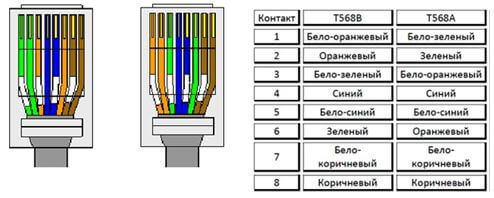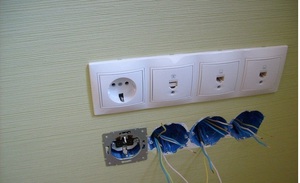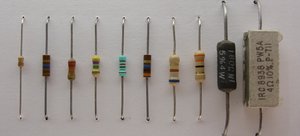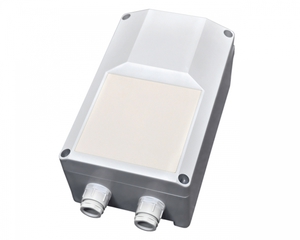
Twisted pair crimping scheme for Internet connection: types of cables, crimping process and scheme
In the modern period, when the internet is in every apartment, any user should know, how to lay wires correctly. At least, a man must be able to do it in his apartment, to be able to connect to the World Wide Web without assistance. Naturally, you will not have the Internet after laying the cable alone, because you did not connect it to the network card directly. To do this, you must have a connector defined. It should be attached to the end of the wire, the result should be a twisted pair.
However, to do this without the help of special devices will not work, since this device must be crimping. But there is a simpler option - go to the store and buy a ready-made cable "twisted pair". But in this case you will have to pay for it 5, and even in 10 times the amount. So, if you want to save, then try to make a cable "twisted pair" yourself.
It is no coincidence that this cable got its name. It presents 8 copper conductors, which are distributed in pairs. These wires are arranged in a folded form and have approximately the same color. Let's say, it can be orange and white-orange, blue and white-blue, etc.. d. Considering, that they are arranged in pairs and twisted, then they decided to call the twisted pair.
What are they for? 8 wires?
I must say, that such an option was made in the future. Will at that moment, as soon as high-speed Internet began to spread, such cables were often used in internal networks. In other words, they used to connect two or more computers or connect to a router, thus creating a common network. At that time, all wires had only 4 wires. Such cables were 100 megabit network, which was characterized by high at that time data rate.
However, faster cables began to emerge, and so today everyone has the ability to make a network with data rates up to 1 gigabit per second. This feature is provided in any modern network card, regardless, is it built-in or separate. And to create so much high-speed network, we must have a cable with eight wires or 4 twisted pair.
For this reason, it is desirable to crimp all eight wires, if you purchased this type of cable. However, you can find special cables, in which it is provided only 4 lived.
What you need for the crimper?
If you decide to compress the twisted pair yourself, then your first thing should be the wire itself. When choosing it, focus on that speed, which will suit you: wire with 4 veins will be able to provide data transmission at speed 100 megabits per second, and a cable with eight cores - 1 gigabit. There is an important point here: the cable purchased must be special, designed to create networks and the Internet.
Types of cables
To date, they are made in 2 options:
STP cables. They represent a class of shielded cables, which have a fairly high price and are not an unalterable option for laying networks in the apartment.
- UTP. These cables are unshielded. They are most often used in a variety of rooms. Demonstrating high practicality, they are also affordable.
There are several subcategories within UTP cables: 3, 5, 6 and 7. Choosing categories 3, you get the cheapest and not very high-quality twisted pair, because it has thin veins, which will not last long. Vita couple, belonging to the category 7, differs in high stability and reliability, however, due to the high price, it cannot be considered the best option. The best choice available today is 5 category, which is not only affordable, but also has a fairly good quality of execution. Today, the vast majority of organizations use this cable, which will suit any consumer in all respects.
RJ-45 connector. This is a standard connector, by means of which network devices are connected. It will be used by us to fix it on the veins stripped of insulation.
Crimping tool. A simple folding knife will come up as it. You will also need special scissors, called ticks.
Special tool. Confess openly, it is not necessary for the average user to use it. However, if you set yourself the task of making a twisted pair according to all the rules, then you have to prepare it.
Many often ask questions, what is the point in using ticks, if this operation can be performed with scissors. In part, they are right, because you can compress the veins and them. However, ask yourself questions, whether you will be able to ensure efficient cable operation with this crimping option? You will be able to achieve the condition, if you buy the simplest ticks. And for them you have to pay no more 200 rubles.
How to combine colors?
In principle, there is nothing complicated about it. To date, there are two types of connections:
- standard T568A;
- standard T568B.
To make it easier for you to deal with them, you need to remember the following: the first has a white-orange-orange color, and the second - white and green, green.
Frankly, in our country the most popular 2 version. However, if you are creating an internal network, then you can crimp the cable this way, which you will like.
Twisted pair compression 8 alive
Let's dwell on that in more detail, how to compress 8 wires when creating a network with speed 1 gigabit. Considering, that today the demand for faster networks for the Internet is growing, such a crimping scheme is the most popular.
Cable crimping process
You must first remove the insulation at the end of the cable this way, to have it cleaned up on 3 div.
Further, in accordance with the scheme of pinning, you need to carefully unravel all the veins from each other, so that they are located separately.

Next, we will manipulate the RJ-45 connector: we have to insert the wires, however, first you just need to place them without crimping, to find out, that each of the tubules is made of high quality, and the wires come to an end.
When it's time to insert the wires into the connector, you do not mind focusing on the contact group. For traditional connectors, the arrangement of contacts and colors has the following scheme:
The first is white and orange;
- The second is orange;
- The third is white and green;
- The fourth is Blue;
- Fifth - white and blue;
- The sixth is green;
- Seventh - white-brown;
- Eighth - brown.
After, as we inserted all the wires, according to the scheme of pinning, you should make sure, that they entered to the very end. If everything is done correctly, you can proceed to crimping.
Bare end cable on 3 see we need to prune. Performing such manipulation, we will achieve that, that the wire will be securely fastened and will not move. This is possible with the design of the RJ-45 connector, which has a special tubercle, locking winding.
When the twisted pair is trimmed, you need to put the wire in the connector, then we put all this design in a tick. You will easily understand, where exactly you need to place the cable, because ticks have a special connector, which is only suitable for one position. Then just click on the tool, and the task will be solved.



